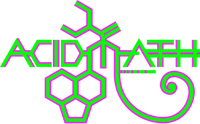From Canvas to Consciousness: How Art and Psychedelics Intersect
The intricate relationship between art and psychedelics has intrigued humanity for centuries. Both art and psychedelics offer unique paths to explore human consciousness, perception, and creativity. Artistic expression has been deeply entwined with the use of psychedelic substances, such as psilocybin, LSD, and DMT, providing artists with new dimensions of imagination and inspiration. This essay delves into the intersection of art and psychedelics, exploring historical connections, the impact of altered states of consciousness on artistic expression, and the potential for psychedelic art to shape cultural perspectives.
Historical Connections: Psychedelics as Tools of Creativity
Throughout history, various cultures have integrated psychedelic substances into spiritual rituals and artistic practices. Ancient civilizations, such as the Aztecs and indigenous tribes in the Amazon rainforest, used psychedelics like peyote and ayahuasca to gain insight into the mysteries of existence and connect with higher realms. Shamans and artists alike often served as intermediaries between the mundane and the divine, drawing inspiration from their psychedelic experiences to create elaborate works of art that captured the essence of their visions.
In the 20th century, the counterculture movement further cemented the connection between art and psychedelics. Influential artists like Alex Grey and Robert Venosa produced visionary art that vividly depicted their psychedelic experiences, fostering a global interest in the transformative power of both art and psychedelic substances.

Impact of Altered States of Consciousness on Artistic Expression
Psychedelics have the capacity to induce altered states of consciousness that transcend ordinary perceptions, opening the door to novel artistic visions and insights. The visual effects, enhanced colors, and intricate patterns experienced during a psychedelic journey often find their way onto the canvas or into various art forms. Artists frequently report a sense of profound interconnectedness and heightened creativity while under the influence of psychedelics, allowing them to express emotions and ideas that might have eluded them in their sober state.
Artists who embrace psychedelic experiences often describe a breaking down of artistic barriers, a dissolution of the ego, and an immersion into a realm of pure creativity. Psychedelic art thus becomes a window into the artist's psyche, showcasing the depth of human imagination and the richness of the inner world.

Psychedelic Art: Shaping Cultural Perspectives
Psychedelic art extends beyond individual expression and has contributed to shaping cultural perspectives. The vivid and surreal imagery of psychedelic art challenges conventional notions of reality, prompting viewers to question their own perceptions and beliefs. The exploration of consciousness and altered states of mind through art can encourage a broader cultural conversation about the human experience and the nature of reality itself.
In addition to traditional art forms, the psychedelic movement has influenced various artistic expressions, including music, literature, and cinema. Psychedelic music, characterized by experimental sounds and consciousness-altering lyrics, has become synonymous with countercultural movements and artistic freedom. Similarly, psychedelic literature often delves into themes of expanded consciousness, self-discovery, and spiritual exploration.

Ethical Considerations and Responsible Use
While the connection between art and psychedelics is undeniable, it is crucial to address ethical considerations and responsible use. Psychedelic substances, due to their potential for inducing altered states of consciousness, must be treated with respect and caution. Unsupervised and indiscriminate use of psychedelics can lead to adverse effects on mental health and wellbeing.
Moreover, not all artists may find inspiration or creative enhancement through the use of psychedelics. Artistic expression remains a deeply personal and multifaceted endeavor, influenced by a multitude of factors beyond the use of substances.
Conclusion
The intersection of art and psychedelics is a captivating realm where consciousness and creativity intertwine. Historical connections, from ancient rituals to the counterculture movement, illustrate the profound impact of psychedelic substances on artistic expression. Psychedelic art serves as a portal into altered states of consciousness, offering viewers a glimpse into the vastness of the human imagination and the boundless possibilities of artistic creation.
As society continues to explore the potential therapeutic applications of psychedelics and their role in shaping artistic expression, it is essential to approach these substances with mindfulness, ethical considerations, and a comprehensive understanding of their effects. Art and psychedelics, in their own right, offer gateways to new dimensions of perception and consciousness, reminding us of the profound and transformative power of both human creativity and the exploration of altered states of mind.
References:
-
Brown, D. (2017). The visionary art of Alex Grey. Inner Traditions/Bear & Co.
-
Grey, A. (1990). Sacred Mirrors: The Visionary Art of Alex Grey. Inner Traditions/Bear & Co.
-
Frecska, E., & Luna, L. E. (2006). The art of the psychoactive: Visionary and spiritual art since the 1960s. Park Street Press.
-
Masters, R. E. L., & Houston, J. (2000). The Varieties of Psychedelic Experience: The Classic Guide to the Effects of LSD on the Human Psyche. Park Street Press.
-
Wasson, R. G., Hofmann, A., & Ruck, C. A. P. (2008). The Road to Eleusis: Unveiling the Secret of the Mysteries. North Atlantic Books.
- Art is by Acidmath AI


Hinterlassen Sie einen Kommentar